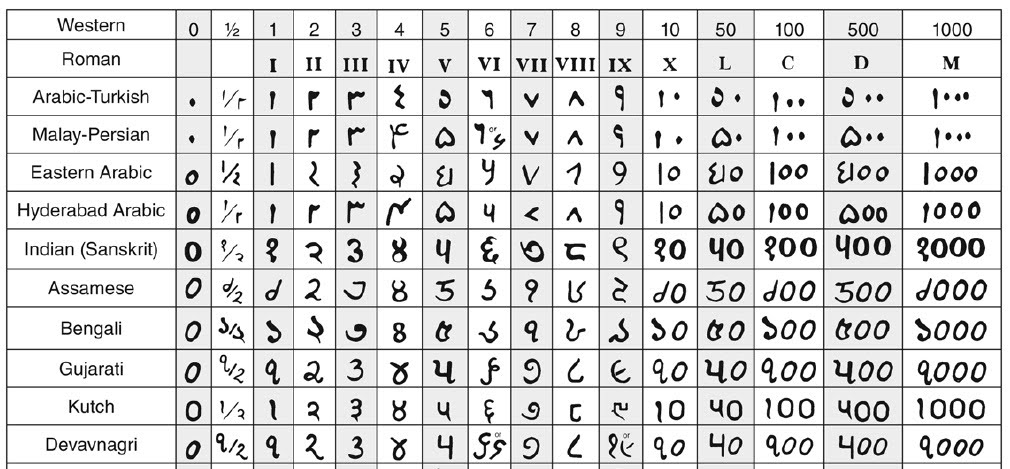
The present system uses the 24 letters used by Euclid, as well as three Phoenician and Ionic ones that had not been dropped from the Athenian alphabet (although kept for numbers): digamma, koppa, and sampi. More thorough modern archaeology has caused the date to be pushed back at least to the 5th century BCE, a little before Athens abandoned its pre-Euclidean alphabet in favour of Miletus's in 402 BCE, and it may predate that by a century or two. 19th century classicists placed its development in the 3rd century BCE, the occasion of its first widespread use. The present system probably developed around Miletus in Ionia.

The same system was used outside of Attica, but the symbols varied with the local alphabets, for example, 1,000 was in Boeotia.

One-quarter was represented by 𐌂 (right half of a full circle) and one-half by the left side of the circle. The numbers 50, 500, 5,000, and 50,000 were represented by the letter with minuscule powers of ten written in the top right corner:, ,, and. They were acrophonic, derived (after the initial one) from the first letters of the names of the numbers represented.

Īttic numerals comprised another system that came into use perhaps in the 7th century BCE. The Minoan and Mycenaean civilizations' Linear A and Linear B alphabets used a different system, called Aegean numerals, which included number-only symbols for powers of ten: 𐄇 = 1, 𐄐 = 10, 𐄙 = 100, 𐄢 = 1000, and 𐄫 = 10000.


 0 kommentar(er)
0 kommentar(er)
